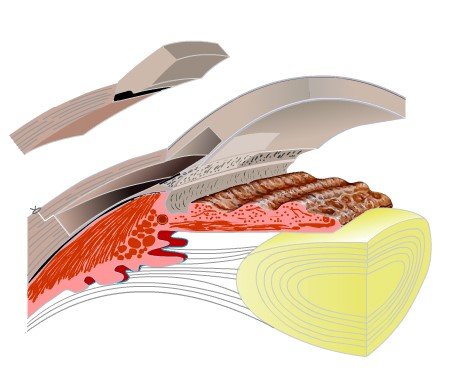Viscocanalostomy Surgery in the U.S.
Viscocanalostomy is an advanced non-penetrating glaucoma surgery designed to lower intraocular pressure (IOP) while reducing the risks associated with traditional filtering surgeries. The procedure enhances the eye’s natural drainage system, allowing fluid (aqueous humor) to flow more freely and protect the optic nerve from further damage.
This technique is particularly valued for its lower complication rate compared to trabeculectomy, making it a preferred choice for patients who require safer, controlled pressure reduction.
Why Viscocanalostomy Is Recommended
Ophthalmologists may recommend viscocanalostomy surgery for patients with:
-
Primary open-angle glaucoma not responding to medications
-
Moderate to advanced glaucoma requiring significant pressure lowering
-
A preference for a safer alternative to full-thickness filtration surgery
This procedure is often performed when patients need long-term pressure control without the risks of sudden hypotony or infection that can occur with more invasive operations.
How the Procedure Works
During viscocanalostomy, the surgeon carefully removes part of the deep scleral tissue to expose Schlemm’s canal (the natural drainage channel). A viscoelastic gel is injected to dilate and open the canal, improving outflow and lowering IOP.
Key points:
-
Anesthesia: Local or regional anesthesia is typically used.
-
Duration: The surgery takes about 30–45 minutes.
-
Hospital Stay: Usually outpatient; patients return home the same day.
-
Goal: Restore natural drainage without creating a full-thickness opening.
Advantages of Viscocanalostomy
-
Lower Risk of Complications – Reduces chances of hypotony, infection, and bleb-related problems.
-
Physiological Drainage Restoration – Uses the eye’s natural outflow pathways.
-
Faster Recovery – Less trauma to the eye compared to trabeculectomy.
-
Long-Term IOP Control – Can significantly reduce or even eliminate the need for glaucoma medications.
-
Repeatable and Adjustable – Can be revised if filtration decreases over time.
Risks and Possible Complications
While considered safer than more invasive surgeries, viscocanalostomy may still have risks:
-
Scarring that can block the newly created drainage pathway
-
Need for postoperative laser goniopuncture to maintain flow
-
Mild inflammation, temporary blurred vision, or foreign-body sensation
Close follow-up care is essential to ensure the procedure remains effective.
Recovery After Surgery
Patients generally experience a smoother recovery with viscocanalostomy than with trabeculectomy.
Typical recovery expectations:
-
First week: Mild irritation and redness; eye drops prescribed to prevent inflammation.
-
1–3 months: Gradual stabilization of IOP; monitoring of Schlemm’s canal and filtering space.
-
Long-term: Regular follow-ups to ensure canal remains open and functional.
Avoid heavy lifting, eye rubbing, and strenuous activity during the early healing phase.
Success Rates and Outcomes
Studies have shown that viscocanalostomy surgery can lower IOP by 30–40%, providing significant relief for patients with moderate glaucoma. Many patients are able to reduce their dependence on glaucoma medications, and the procedure can be combined with implants or antimetabolites for improved success rates.
Comparison With Other Glaucoma Surgeries
| Procedure | Invasiveness | IOP Reduction | Risk Profile | Recovery Time |
|---|---|---|---|---|
| Viscocanalostomy | Moderate | High | Lower Risk | Shorter |
| Deep Sclerectomy | Moderate | High | Lower Risk | Shorter |
| Trabeculectomy | High | Very High | Higher Risk | Longer |
| Tube Shunt Surgery | High | High | Moderate | Moderate |
Viscocanalostomy is ideal for patients who want strong IOP reduction with a safer, controlled healing process.
Availability in the Philippines
In the Philippines, viscocanalostomy surgery may not be as widely available as in the U.S. It is typically performed in major hospitals and specialized ophthalmology centers. Patients interested in this procedure should consult a glaucoma specialist to confirm availability and discuss whether this surgery is the right choice.
Cost of Viscocanalostomy in the U.S.
The cost of viscocanalostomy surgery in the U.S. typically ranges between $3,500 and $6,000 per eye, depending on hospital fees, surgeon expertise, and whether additional implants or adjunctive medications are used. Health insurance may cover part or all of the cost if it is deemed medically necessary.




